
Electrical and electronic products company Hubbell (NYSE:HUBB) missed Wall Street’s revenue expectations in Q2 CY2025 as sales rose 2.2% year on year to $1.48 billion. Its non-GAAP profit of $4.93 per share was 12.1% above analysts’ consensus estimates.
Is now the time to buy Hubbell? Find out by accessing our full research report, it’s free.
Hubbell (HUBB) Q2 CY2025 Highlights:
- Revenue: $1.48 billion vs analyst estimates of $1.51 billion (2.2% year-on-year growth, 1.9% miss)
- Adjusted EPS: $4.93 vs analyst estimates of $4.40 (12.1% beat)
- Adjusted EBITDA: $384.6 million vs analyst estimates of $345.9 million (25.9% margin, 11.2% beat)
- Management raised its full-year Adjusted EPS guidance to $17.90 at the midpoint, a 1.7% increase
- Operating Margin: 22.7%, up from 20.7% in the same quarter last year
- Free Cash Flow Margin: 14.9%, similar to the same quarter last year
- Organic Revenue rose 1.9% year on year, in line with the same quarter last year
- Market Capitalization: $23.39 billion
“Hubbell delivered double digit adjusted earnings per share growth in the second quarter, driven by strong organic growth in Grid Infrastructure and Electrical Solutions, as well as year-over-year margin expansion” said Gerben Bakker, Chairman, President and CEO.
Company Overview
A respected player in the electrical segment, Hubbell (NYSE:HUBB) manufactures electronic products for the construction, industrial, utility, and telecommunications markets.
Revenue Growth
A company’s long-term performance is an indicator of its overall quality. Any business can experience short-term success, but top-performing ones enjoy sustained growth for years. Unfortunately, Hubbell’s 6.5% annualized revenue growth over the last five years was mediocre. This wasn’t a great result compared to the rest of the industrials sector, but there are still things to like about Hubbell.
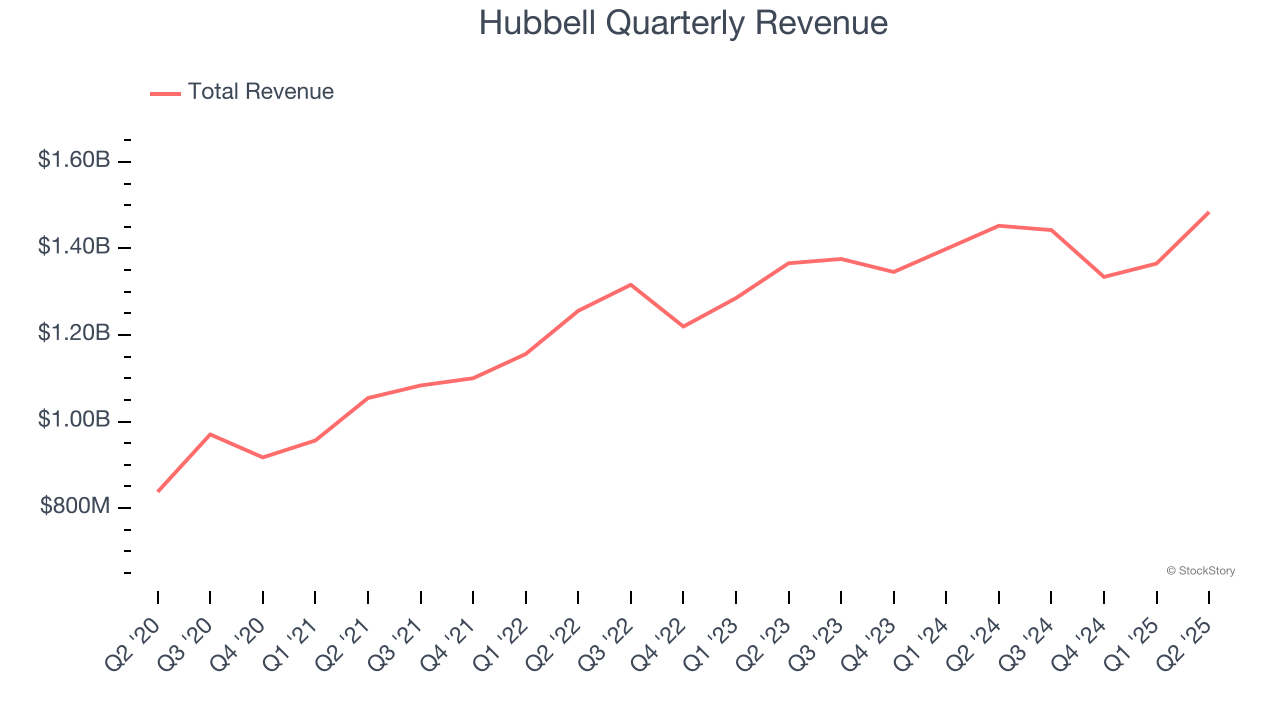
We at StockStory place the most emphasis on long-term growth, but within industrials, a half-decade historical view may miss cycles, industry trends, or a company capitalizing on catalysts such as a new contract win or a successful product line. Hubbell’s recent performance shows its demand has slowed as its annualized revenue growth of 4.1% over the last two years was below its five-year trend. We also note many other Electrical Systems businesses have faced declining sales because of cyclical headwinds. While Hubbell grew slower than we’d like, it did do better than its peers. 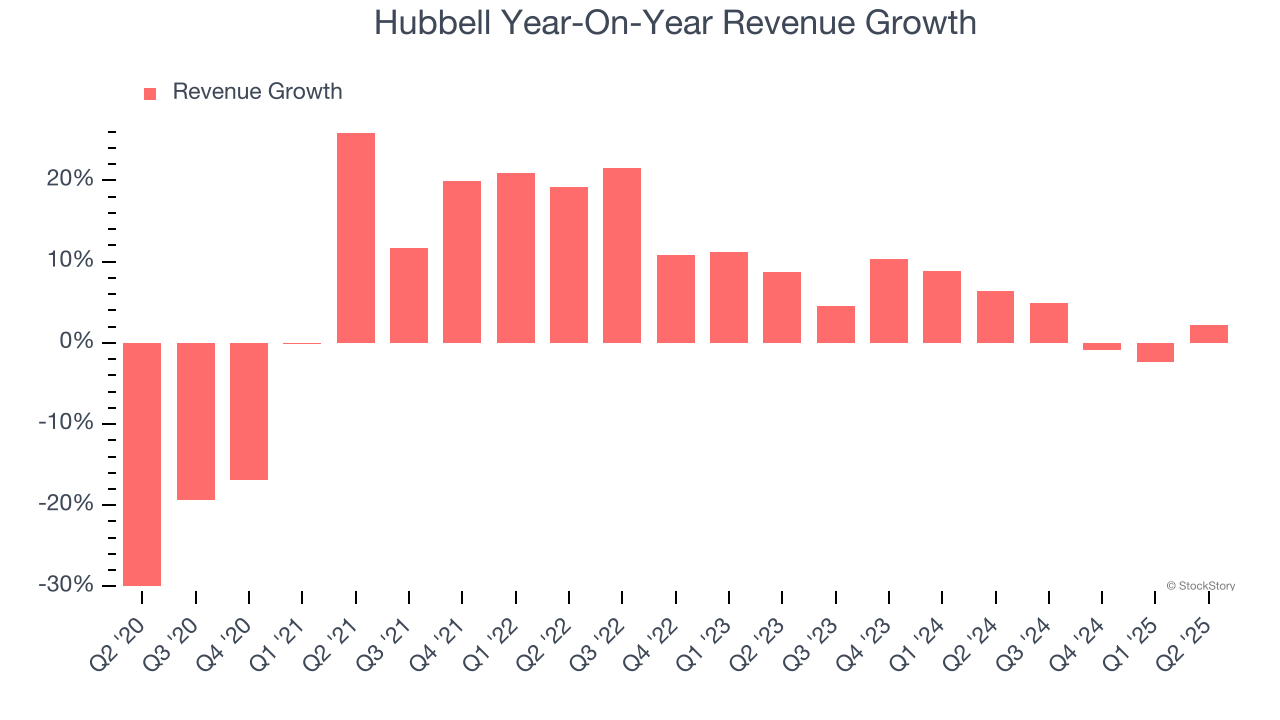
Hubbell also reports organic revenue, which strips out one-time events like acquisitions and currency fluctuations that don’t accurately reflect its fundamentals. Over the last two years, Hubbell’s organic revenue averaged 1.6% year-on-year growth. Because this number is lower than its normal revenue growth, we can see that some mixture of acquisitions and foreign exchange rates boosted its headline results. 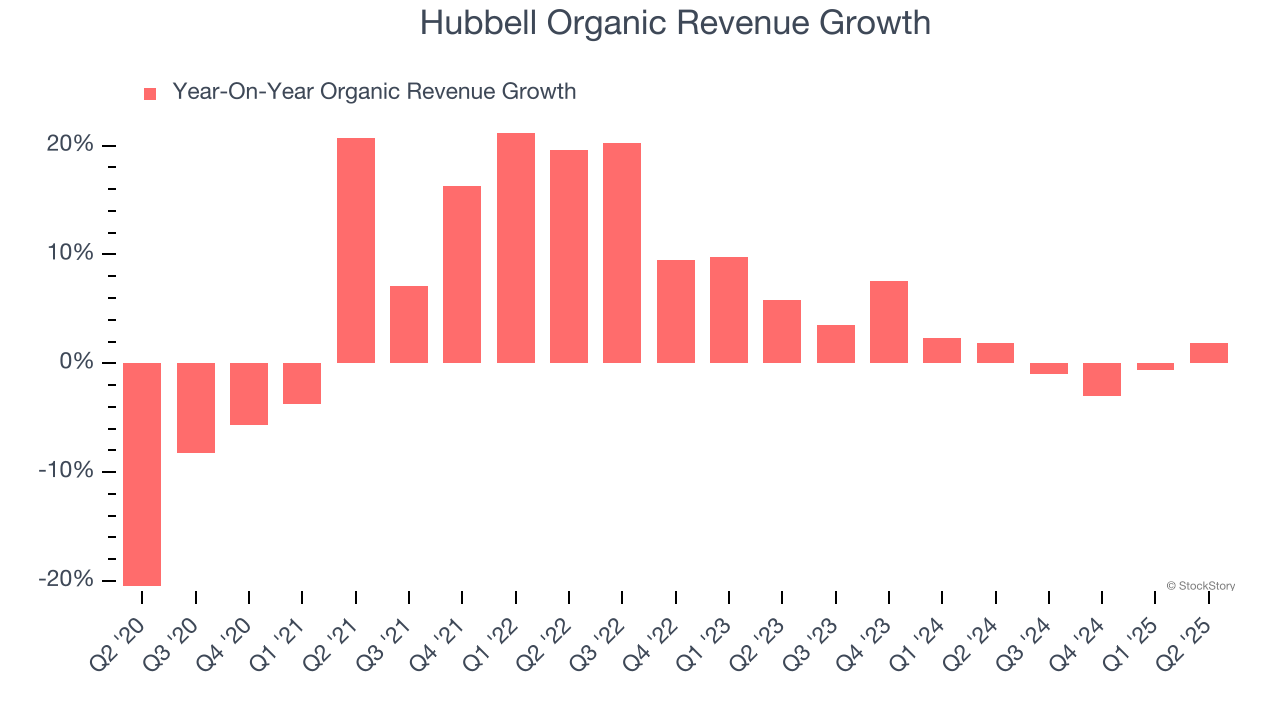
This quarter, Hubbell’s revenue grew by 2.2% year on year to $1.48 billion, falling short of Wall Street’s estimates.
Looking ahead, sell-side analysts expect revenue to grow 8.5% over the next 12 months, an improvement versus the last two years. This projection is above average for the sector and suggests its newer products and services will spur better top-line performance.
Today’s young investors won’t have read the timeless lessons in Gorilla Game: Picking Winners In High Technology because it was written more than 20 years ago when Microsoft and Apple were first establishing their supremacy. But if we apply the same principles, then enterprise software stocks leveraging their own generative AI capabilities may well be the Gorillas of the future. So, in that spirit, we are excited to present our Special Free Report on a profitable, fast-growing enterprise software stock that is already riding the automation wave and looking to catch the generative AI next.
Operating Margin
Hubbell has been a well-oiled machine over the last five years. It demonstrated elite profitability for an industrials business, boasting an average operating margin of 16.9%.
Analyzing the trend in its profitability, Hubbell’s operating margin rose by 7 percentage points over the last five years, as its sales growth gave it operating leverage.
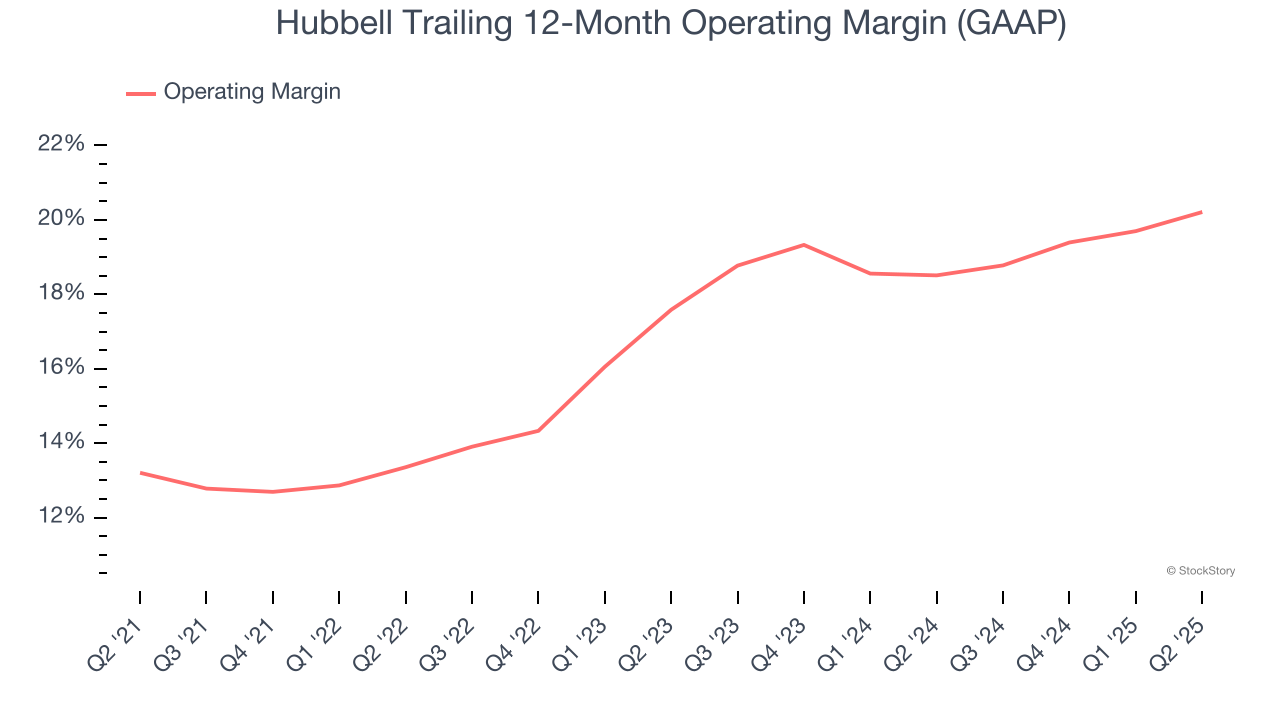
This quarter, Hubbell generated an operating margin profit margin of 22.7%, up 1.9 percentage points year on year. Since its gross margin expanded more than its operating margin, we can infer that leverage on its cost of sales was the primary driver behind the recently higher efficiency.
Earnings Per Share
Revenue trends explain a company’s historical growth, but the long-term change in earnings per share (EPS) points to the profitability of that growth – for example, a company could inflate its sales through excessive spending on advertising and promotions.
Hubbell’s EPS grew at a spectacular 17% compounded annual growth rate over the last five years, higher than its 6.5% annualized revenue growth. This tells us the company became more profitable on a per-share basis as it expanded.
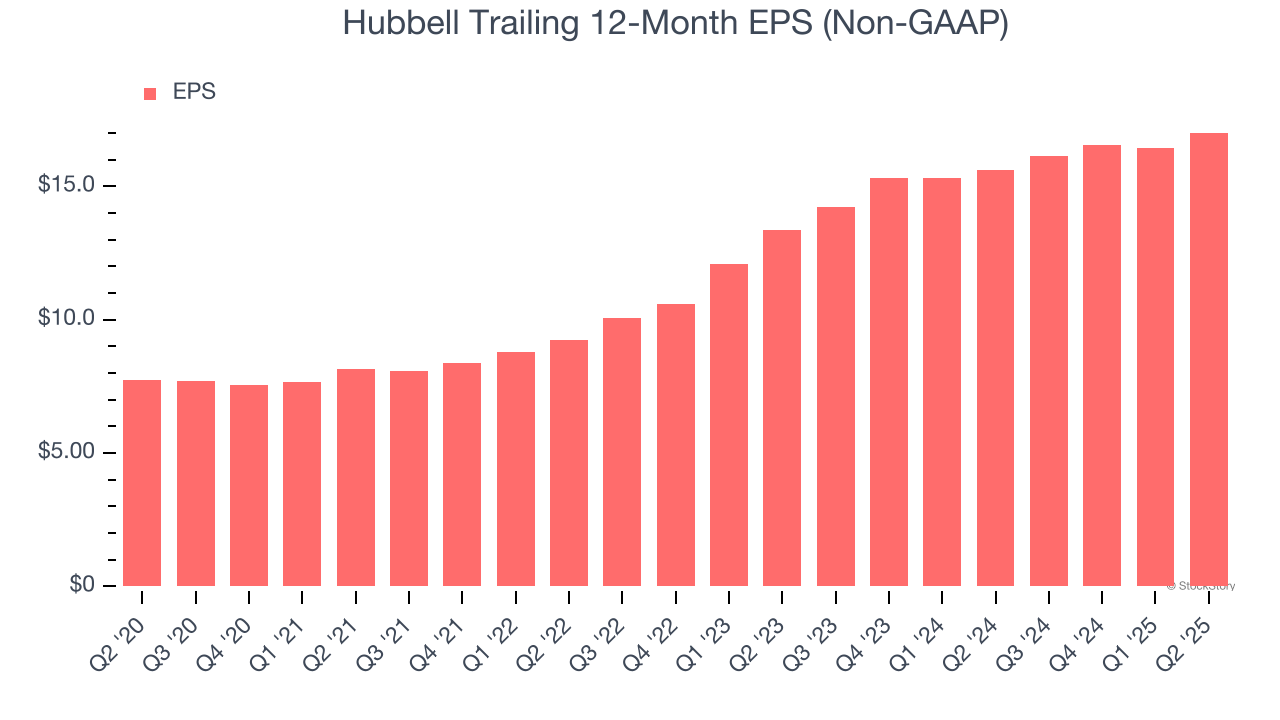
We can take a deeper look into Hubbell’s earnings quality to better understand the drivers of its performance. As we mentioned earlier, Hubbell’s operating margin expanded by 7 percentage points over the last five years. On top of that, its share count shrank by 1.5%. These are positive signs for shareholders because improving profitability and share buybacks turbocharge EPS growth relative to revenue growth. 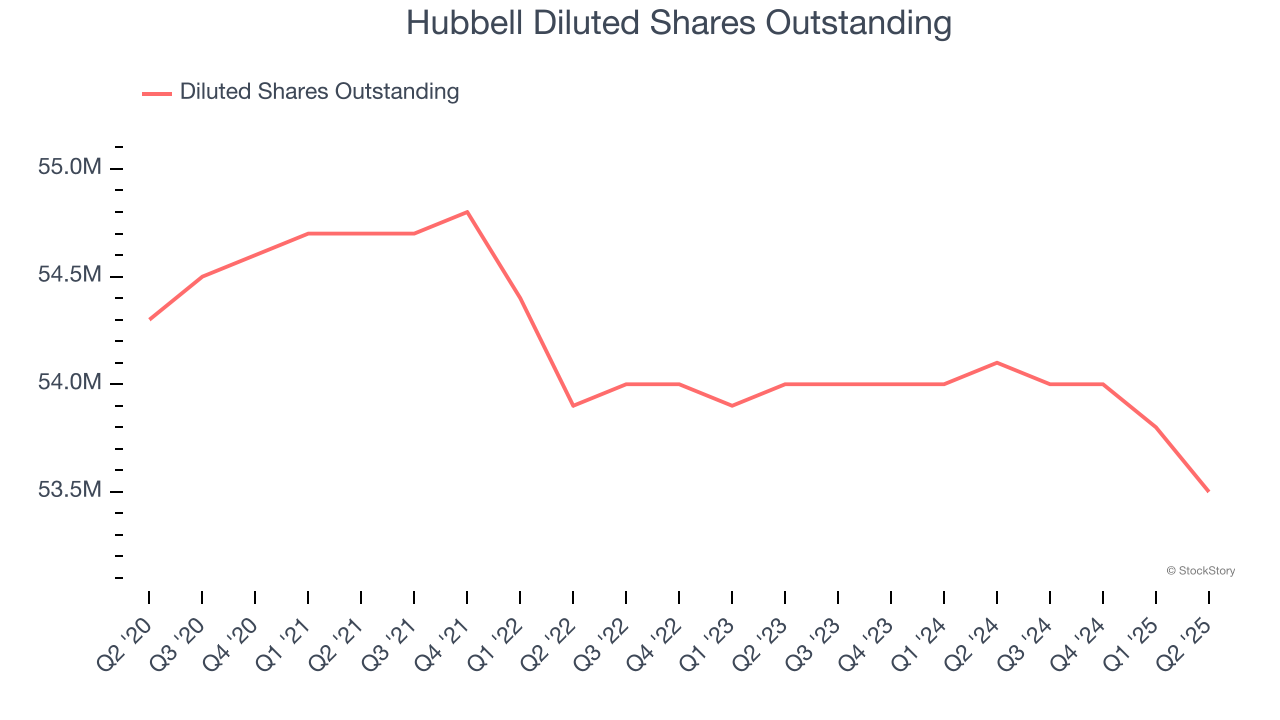
Like with revenue, we analyze EPS over a more recent period because it can provide insight into an emerging theme or development for the business.
For Hubbell, its two-year annual EPS growth of 12.9% was lower than its five-year trend. We still think its growth was good and hope it can accelerate in the future.
In Q2, Hubbell reported EPS at $4.93, up from $4.37 in the same quarter last year. This print easily cleared analysts’ estimates, and shareholders should be content with the results. Over the next 12 months, Wall Street expects Hubbell’s full-year EPS of $17.02 to grow 7.6%.
Key Takeaways from Hubbell’s Q2 Results
We were impressed by how significantly Hubbell blew past analysts’ EPS and EBITDA expectations this quarter. We were also glad it raised its full-year EPS guidance. On the other hand, its organic revenue fell short of Wall Street’s estimates. Zooming out, we think this was a mixed quarter. The stock remained flat at $438 immediately following the results.
Should you buy the stock or not? The latest quarter does matter, but not nearly as much as longer-term fundamentals and valuation, when deciding if the stock is a buy. We cover that in our actionable full research report which you can read here, it’s free.
